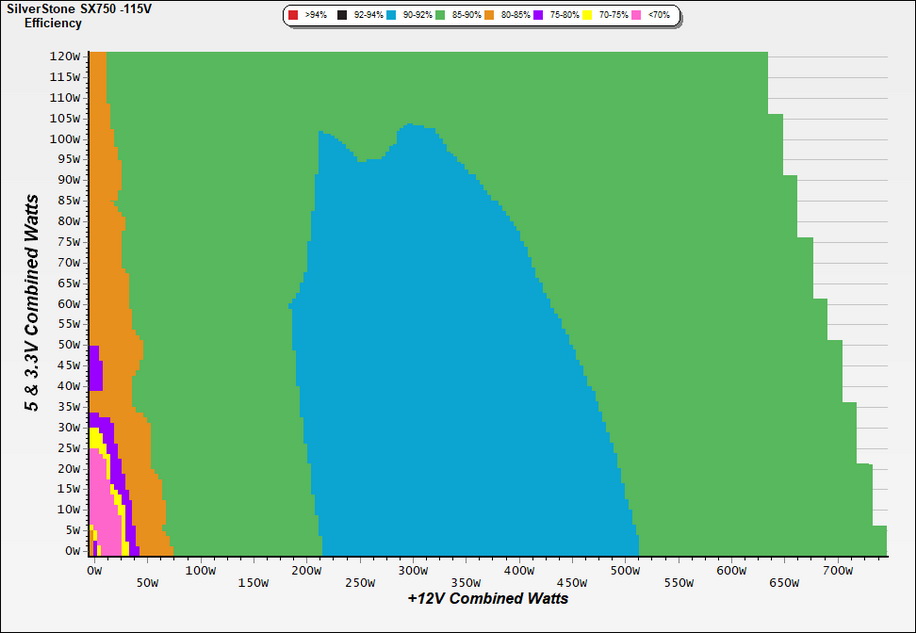Why you can trust Tom's Hardware
Protection Features
Check out our PSUs 101 article to learn more about PSU protection features.
|
OCP (Cold @ 30°C) |
12V: 76.2A (121.92%), 11.996V |
|
OCP (Hot @ 43°C) |
12V: 74.6A (119.36%), 12.012V |
|
OPP (Cold @ 29°C) |
1012.94W (135.06%) |
|
OPP (Hot @ 45°C) |
917.91W (122.39%) |
|
OTP |
✗ (>200°C @ secondary side) |
|
SCP |
12V to Earth: ✓ |
|
PWR_OK |
Accurate but lower than 16ms |
|
NLO |
✓ |
|
SIP |
Surge: MOV |
OCP at 12V and OPP are appropriately set, but this is not the case for OCP on the minor rails, which have sky-high triggering points for no reason. There is no reason for such high power levels on the minor rails, especially at 3.3V. Nonetheless, the worst of all is the lack of over-temperature protection, or at least we couldn't trigger it, despite our efforts.
DC Power Sequencing
According to Intel’s most recent Power Supply Design Guide (revision 1.4), the +12V and 5V outputs must be equal to or greater than the 3.3V rail at all times. Unfortunately, Intel doesn't mention why it is so important to always keep the 3.3V rail's voltage lower than the levels of the other two outputs.
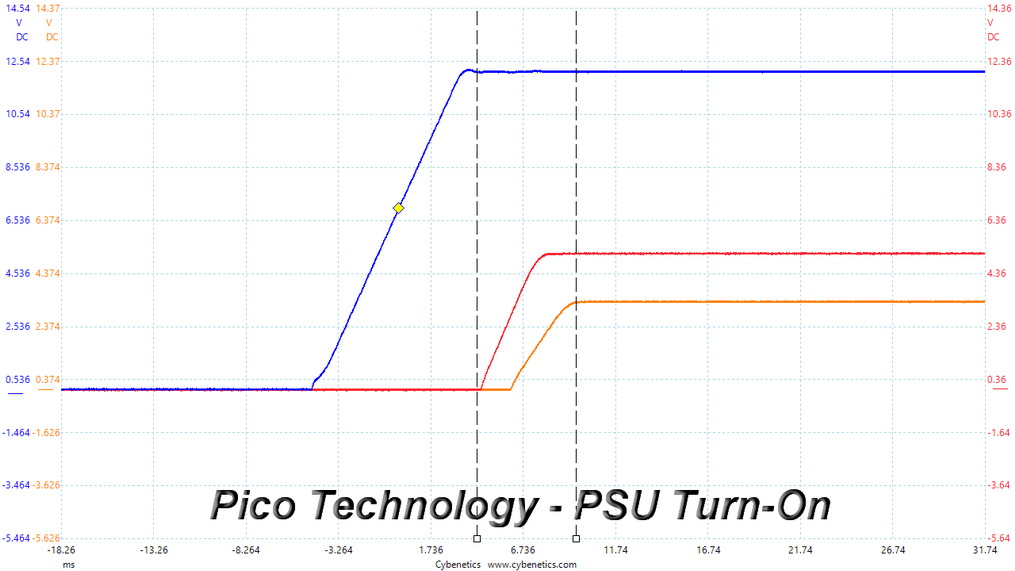
DC Power Sequencing Scope Shots
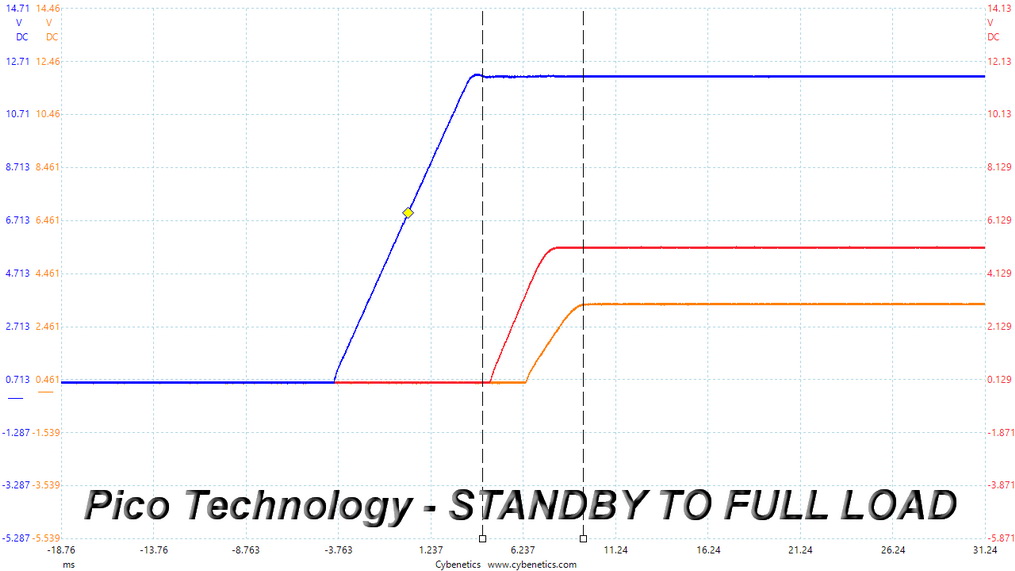

Everything is fine here, since 3.3V rail is always at a lower level than the other two rails.
Cross Load Tests
To generate the following charts, we set our loaders to auto mode through custom-made software before trying more than 25,000 possible load combinations with the +12V, 5V, and 3.3V rails. The deviations in each of the charts below are calculated by taking the nominal values of the rails (12V, 5V, and 3.3V) as point zero. The ambient temperature during testing was between 30 to 32 degrees Celsius (86 to 89.6 degrees Fahrenheit).
Load Regulation Charts
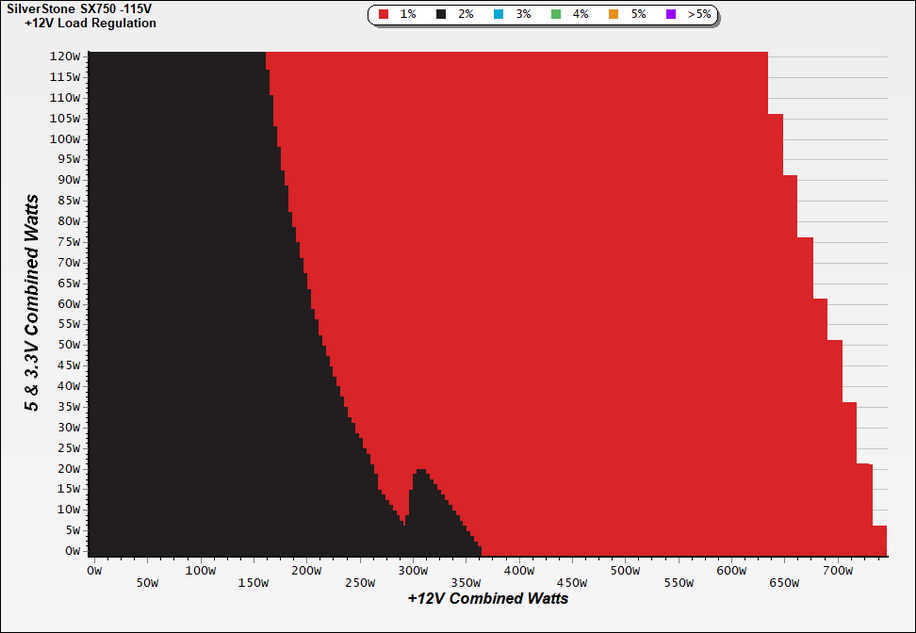
Load Regulation Graphs
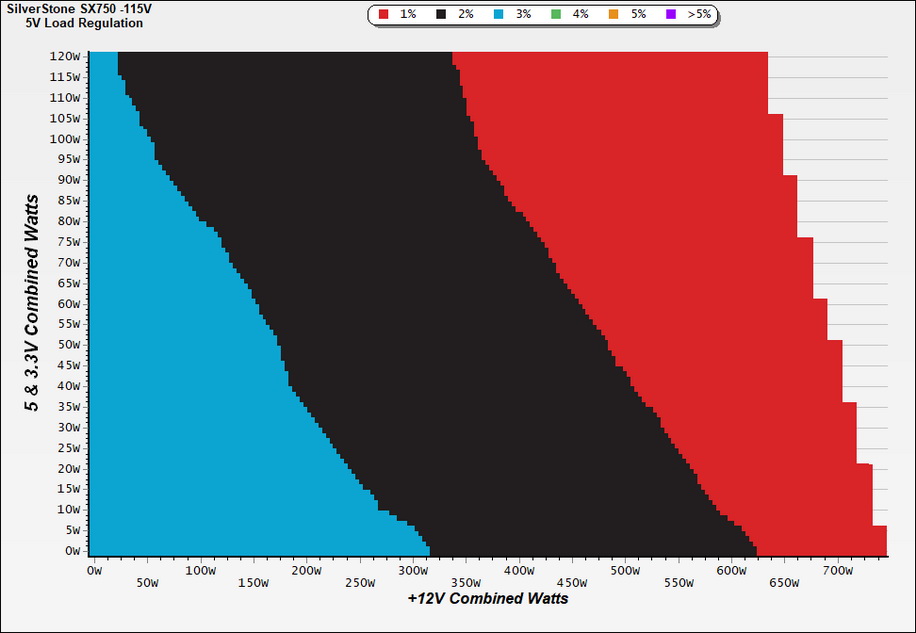
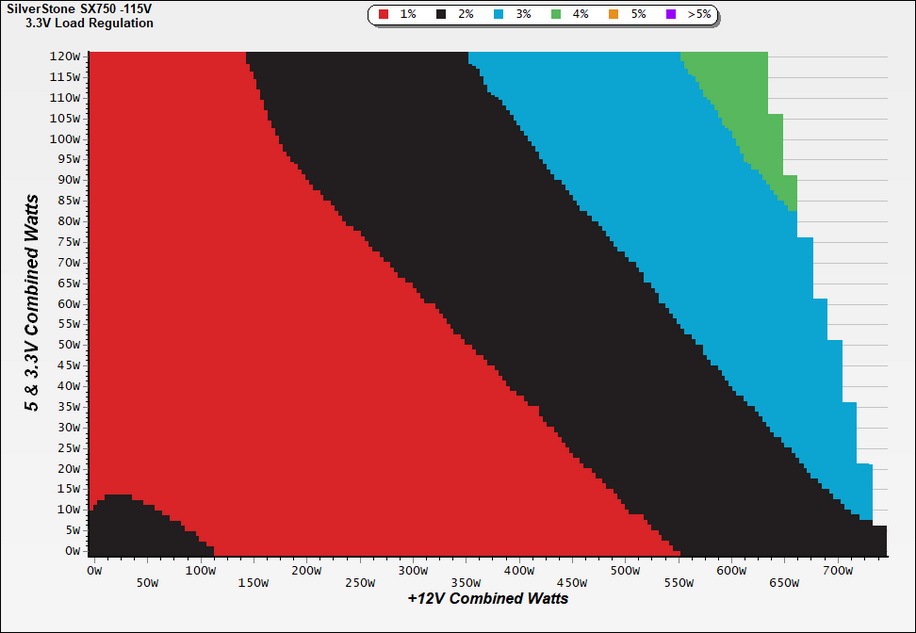
Efficiency Graph
Ripple Graphs
The lower the power supply's ripple, the more stable the system will be and less stress will also be applied to its components.
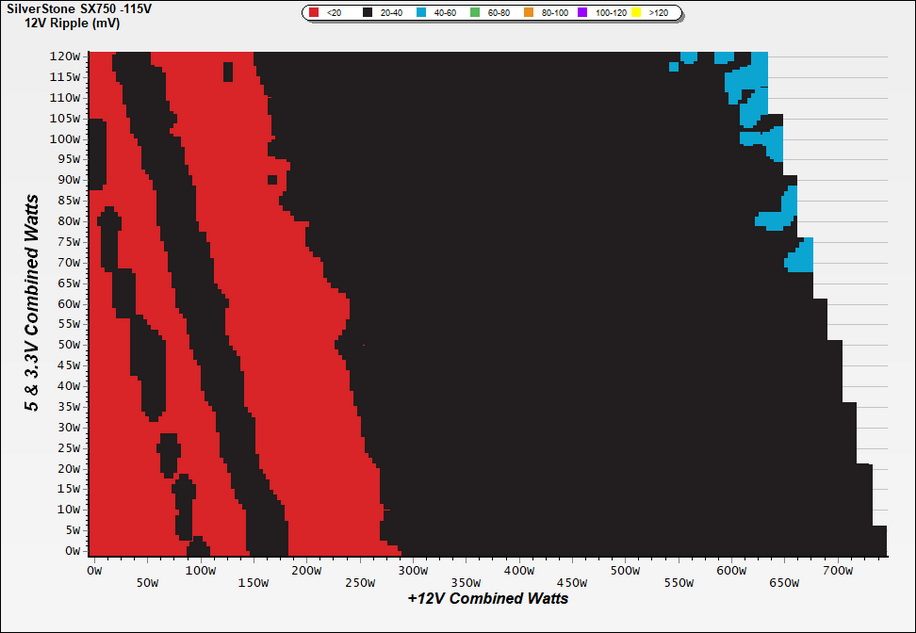
Ripple Suppression Graphs
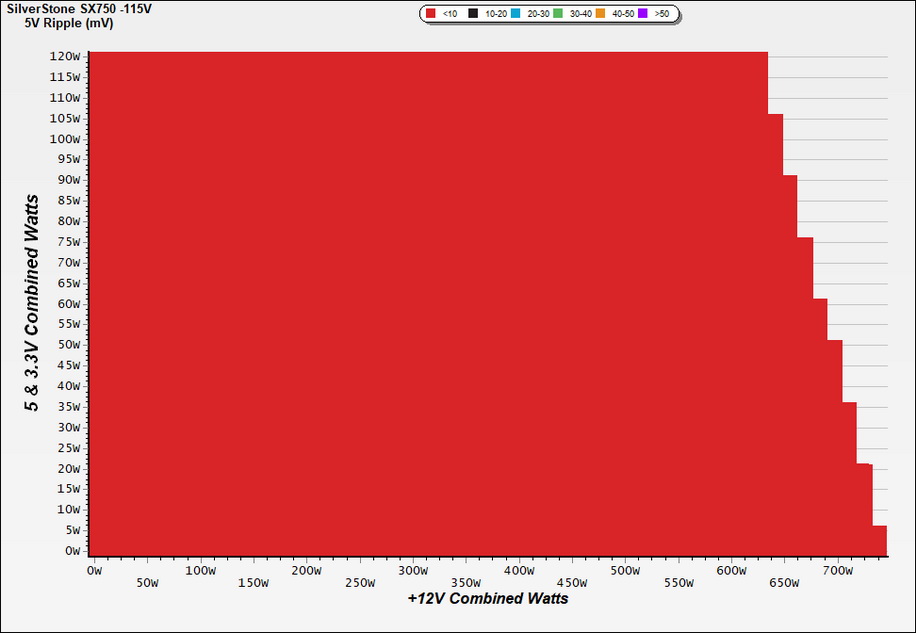


Infrared Images
We apply a half-load for 10 minutes with the PSU's top cover and cooling fan removed before taking photos with a modified FLIR E4 camera able to deliver an IR resolution of 320x240 (76,800 pixels).
Get Tom's Hardware's best news and in-depth reviews, straight to your inbox.

IR Images



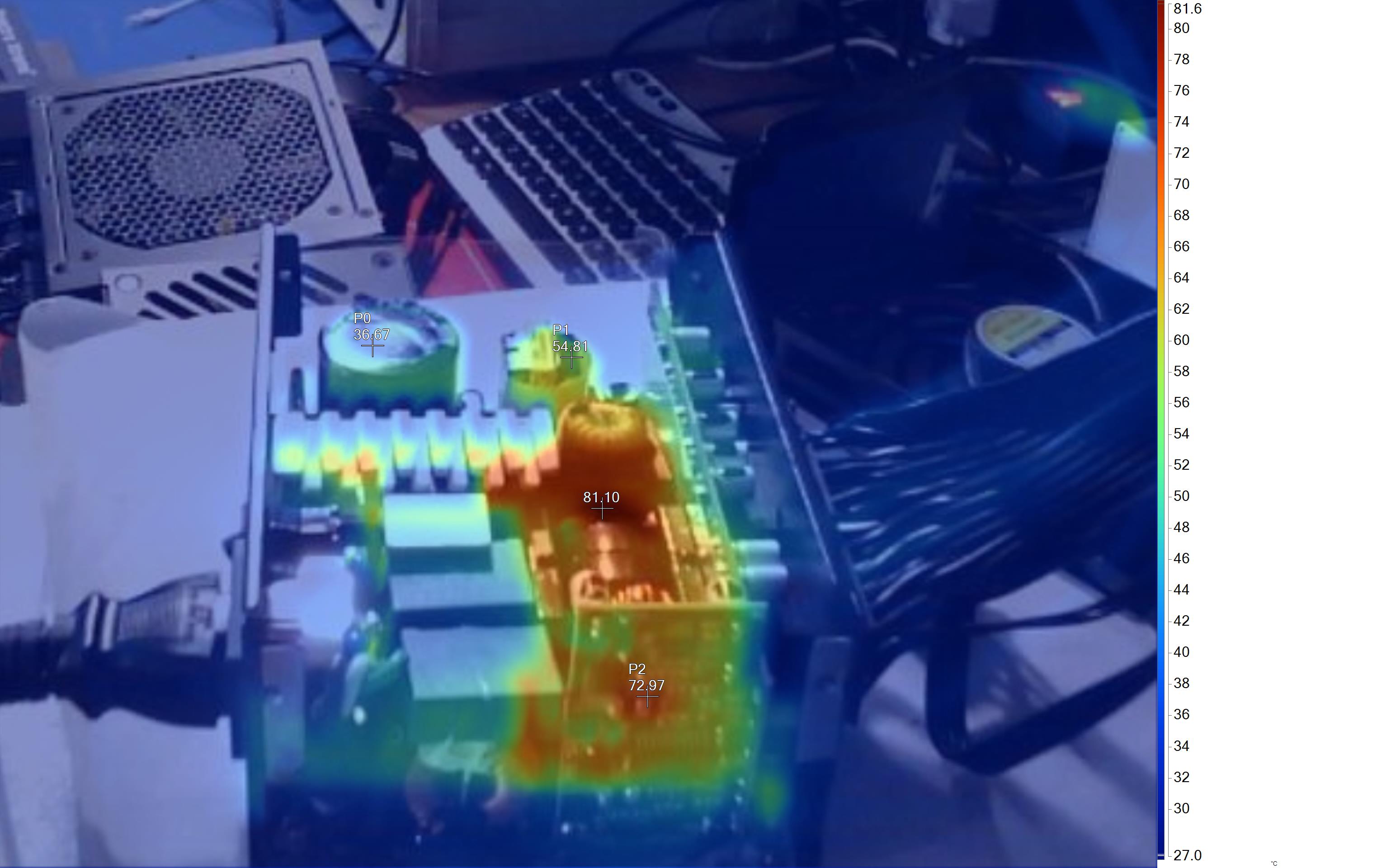
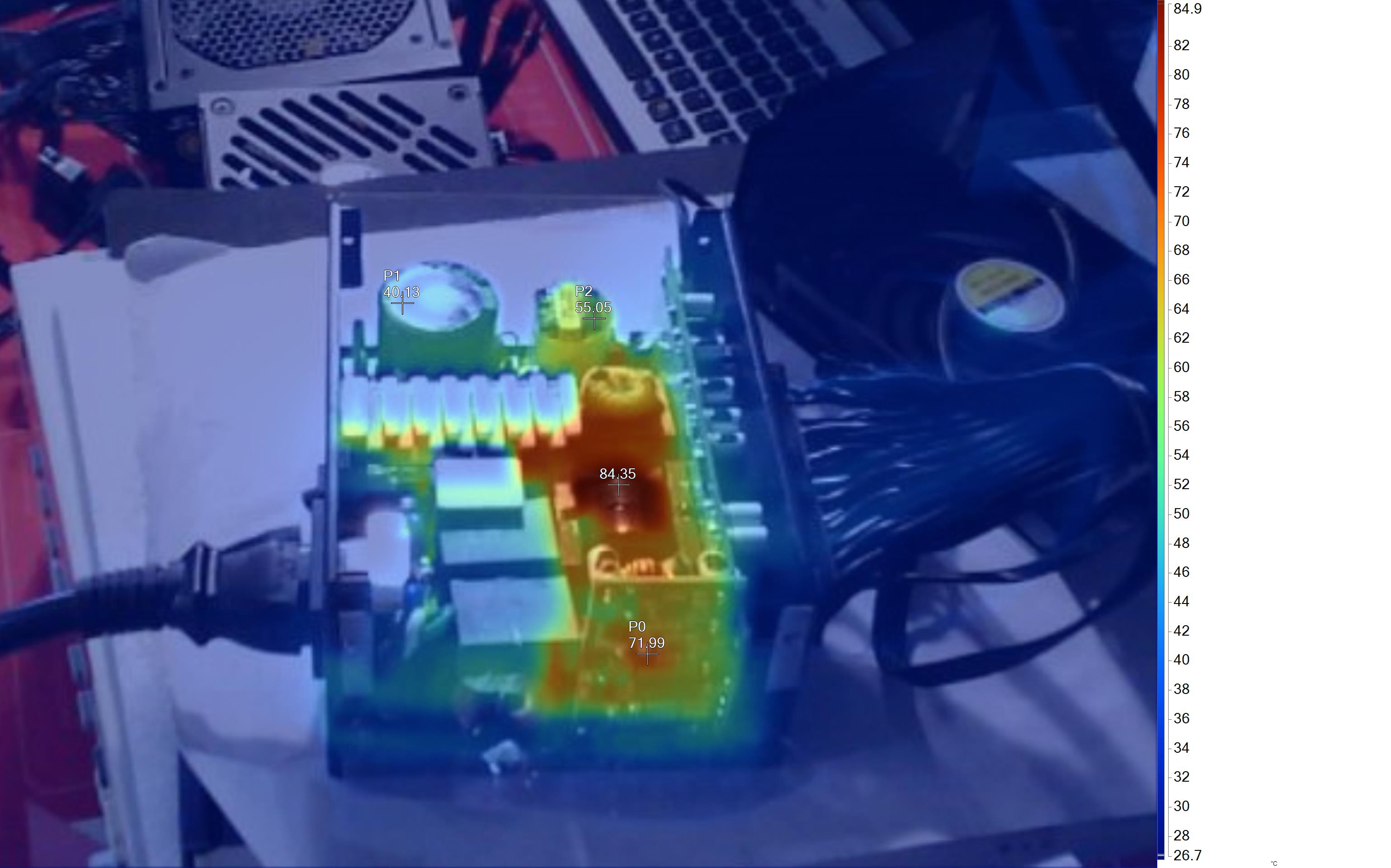
Temperatures are not so high, with the hottest part being the main transformer.
MORE: Best Power Supplies
MORE: How We Test Power Supplies
MORE: All Power Supply Content
Current page: Protection Features, DC Power Sequencing, Cross-Load Tests and Infrared Images
Prev Page Load Regulation, Hold-Up Time, Inrush & Leakage Current, Efficiency and Noise Next Page Transient Response Tests, Timing Tests, Ripple Measurements and EMC Pre-Compliance Testing
Aris Mpitziopoulos is a contributing editor at Tom's Hardware, covering PSUs.
-
solrac0192 Reply
This is for 1.1 Model based on the fifth image:RYANFSS said:Is this review based on v1.1 model or 1.0?
https://cdn.mos.cms.futurecdn.net/tLnQZkRbv4r546DVRoo3ub-970-80.jpg.webp -
AiteeTaitii The review (and manufacturer website) says there are four 8-pin PCIe connectors. I wish I had read the review with enough attention at the time, as it says "only three sockets for EPS and PCIe cables".Reply
I bought the PSU (and have been very happy with it earlier) but now later got "lucky" in the GPU drought with a GPU that wants three PCIe power cables. A dumb non-native speaker like me didn't realize there's a difference between socket and connector, especially when manufacturer site only uses word "connector". CPU eats one, so two are left. Sure, I can "power" all the GPU sockets when using the split-ended PCIe cable. But still I feel a bit uncomfortable reading the small print from manufacturer manual about maximum power draw and voiding warranty: "dual PCIe 8pin connectors that exceed 375W total power draw (300W from two PICe 8 pin connectors + 75W from PCIe motherboard slot)".
So far, things have worked well, GPU power draw stays just below 360W on high load. There are not many options for SFX-size PSU with so many PCIe sockets...
